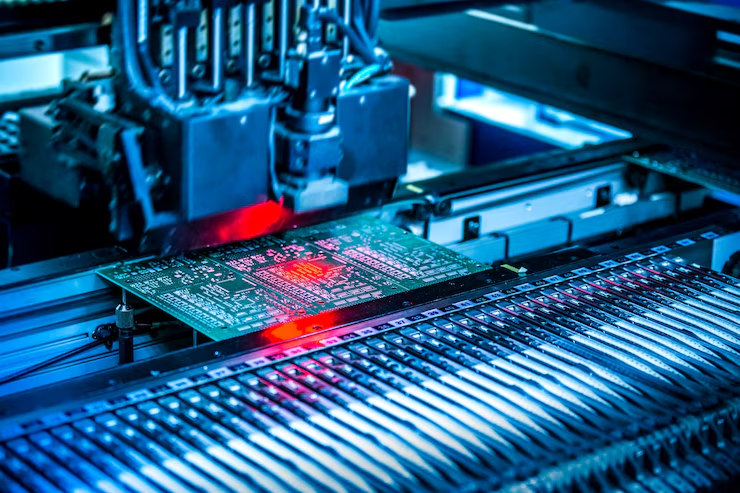The world of manufacturing has entered a dynamic phase of automation, and Licostamp is at the forefront of this transformation. As industries worldwide demand precision, efficiency, and sustainability, digital solutions like Licostamp are becoming not only relevant but vital. With its unique approach to metal stamping, Licostamp has redefined traditional boundaries, giving manufacturers more control and smarter production methods.
From simplifying the die design process to reducing waste and energy consumption, Licostamp is a game-changer in metal-forming technologies. In this article, we’ll take a deep dive into the ins and outs of and its impact on various industries.
What is Licostamp?
is a digital metal stamping solution that integrates computer-aided technologies into the forming process. Unlike conventional stamping methods that rely on physically manufactured dies, uses virtual stamping simulations to test, refine, and finalize stamping processes before any real metal is deformed.
This means faster development cycles, fewer errors, and ultimately, reduced costs. Developed to serve automotive, aerospace, and precision industries, Licostamp bridges the gap between virtual engineering and real-world production.
How Licostamp Works in Practice
The system involves a blend of CAD (Computer-Aided Design), FEM (Finite Element Method) simulations, and automated feedback mechanisms. Here’s a quick overview of the process:
-
Step 1: A CAD model of the part is uploaded.
-
Step 2: simulates the stamping process digitally, analyzing stresses, deformations, and failure points.
-
Step 3: Optimized die designs are generated and validated before production begins.
This flow reduces trial-and-error time dramatically and ensures that each part meets tight tolerances.
Why Licostamp Matters in Today’s Industry
Efficiency is not a luxury anymore—it’s a necessity. Manufacturers face challenges like:
-
Rising material costs
-
Skilled labor shortages
-
Demands for customization
-
Sustainability pressures
helps companies address all of these by:
-
Reducing Material Waste: Simulations help preempt part failures.
-
Speeding Up Time-to-Market: Digital validation slashes lead time.
-
Improving Sustainability: Less scrap means less environmental impact.
Key Benefits of Using Licostamp
Let’s break down the core benefits of integrating into your production line:
| Benefit | Explanation |
|---|---|
| Precision Engineering | Achieves micron-level accuracy through virtual testing. |
| Cost-Effective | Reduces tool trial runs and material wastage. |
| Scalability | Easily adaptable for high-volume or customized parts. |
| Speed | Speeds up die development and process optimization. |
| Sustainability | Supports greener production goals with minimal physical prototyping required. |
Licostamp and Digital Twin Technology
integrates seamlessly with digital twin environments, where virtual models mirror the physical stamping process. Manufacturers can test different materials, press forces, or shapes—all within a risk-free virtual space. This synergy helps avoid potential faults before any sheet metal is touched.
Applications of Licostamp Across Industries
Automotive Sector: Used in the creation of body panels and structural components where precision and repeatability are paramount.
Aerospace: Helps reduce weight without compromising strength, optimizing aircraft structures.
Consumer Electronics: Delivers fine-detail parts at high volumes with minimal margin of error.
Appliance Manufacturing: Supports high-speed production lines without sacrificing part accuracy.
Licostamp in Smart Factories
Smart factories thrive on data, automation, and real-time adjustments. brings valuable insights through its real-time simulation capabilities, allowing engineers to monitor stress distributions, formability, and spring-back during the virtual testing phase. The result? Agile and error-resistant production.
Limitations and Considerations
While offers significant advantages, it’s not a one-size-fits-all solution. Consider these points:
-
Initial Cost: Digital systems and licenses require upfront investment.
-
Training Needs: Staff must be trained to interpret simulation results effectively.
-
Software Compatibility: works best when integrated with leading CAD platforms.
That said, the long-term savings often outweigh these hurdles.
The Future of Licostamp
With the rise of Industry 4.0, the capabilities of will likely expand. Imagine real-time AI feedback loops that adjust dies autonomously or cloud-based collaborative environments for global teams. The future looks bright for digital stamping, and is carving that path.
FAQs About Licostamp
What industries benefit most from Licostamp?
Automotive, aerospace, and consumer electronics industries use to achieve high-precision, high-volume stamping.
Is Licostamp difficult to implement?
Not particularly. While it requires some initial training, most CAD-based manufacturing teams adapt quickly.
Does Licostamp eliminate physical prototyping completely?
It reduces the need significantly but may not eliminate it 100% in every scenario.
Can Licostamp handle multi-stage forming processes?
Yes, it can simulate complex, progressive die systems with multiple forming stages.
Is Licostamp compatible with legacy systems?
Yes, it can be integrated with traditional CAD and PLM tools with minimal reconfiguration.
How does Licostamp contribute to sustainability?
By reducing scrap, energy consumption, and material use through simulation-led optimization.
Conclusion
Licostamp is no longer just a niche innovation—it’s a transformative tool for manufacturers looking to thrive in a competitive, precision-driven, and eco-conscious world. By digitizing the metal stamping process, it brings clarity, speed, and control to an industry often hampered by trial and error. The bottom line? doesn’t just promise better performance—it delivers it.

